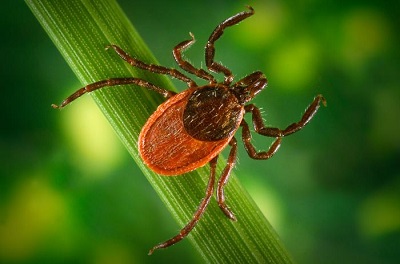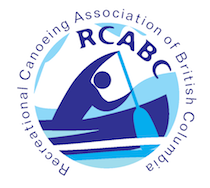
People come from all over the world to enjoy British Columbia’s waterways. It is rare that anyone has a negative encounter with wildlife, particularly if they educate themselves and follow precautions. The photo is of a Deer Tick, spreader of Lyme Disease.
Wildlife safety may make you think of bear attacks, but there are other wildlife, insect and plant species that canoeists should be aware and cautious of in the event of exposure.
WILDLIFE SAFETY AND DISEASES TOPICS:
There are some very toxic plants out there will ruin your day or trip. Get to know these plants and watch for them.
- Poison Ivy is found on many shorelines in southern BC. All parts of the plant contain oil that is an allergen and causes allergic reaction in the skin.
- Giant Hogweed looks like cow parsnip and is newly invasive to BC. It contains a phototoxin concentrated in the sap of the stock that can cause severe skin inflammation.
- Stinging Nettles contain formic acid that will cause a rash.
- Hawthorns, Roses and Thistles are common in BC and have very sharp thorns that can cause injury or put holes in your waterproof gear!
Of course there are many other plants and mushrooms that are harmful if ingested.
Mosquitoes are common, particularly in the interior of BC and canoeists need to be prepared to deal with them.
- Personal netting and bug tents may be required.
- Covering exposed skin with tight woven fabric is very effective.
- Sometimes light gloves or dish gloves can help keep your hands active without using repellents, particularly when cooking and cleaning.
- If repellents are chosen, be aware of safety requirements, particularly when applying to children.
- West Nile virus has spread to BC and is present in some species of mosquitoes. About 20% of people are susceptible to the virus, which creates flu like symptoms. About 1% of people can develop quite severe and even life threatening symptoms.
Ticks and the diseases they carry are increasingly problematic. The black-legged tick is responsible for Lyme Disease in BC. They are common but only a low percentage of black-legged ticks carry the disease. Nonetheless, tick bites should always be monitored. Rocky Mountain Spotted Fever is also found in BC.
Allergic reactions to wasp stings are very serious for some people, causing anaphylaxis or severe swelling resulting in breathing difficulty and even death. Wasps are common throughout BC so carry an Epipen if you have a history of allergies.
Reports from spider experts say that spider bites in BC are very rare and are often the result of a misdiagnosis. There is much confusion about spider bites. They are possible, but it seems very unlikely to be a concern. The often referred to Brown Recluse spider is reported not to be in BC.
In addition to Leave No Trace practices to keep your camp clean, proper food storage is very important. It is a safety issue:
- For your safety
- For the safety of the animal that may attempt to get at your food
- For the safety of future canoeists camping in that location
Animals that typically attempt to raid food caches are mice, chipmunks, racoons and bears. They are all amazingly cunning and persistent. Mice and chipmunks can chew a hole through your portage pack, back pack, tent or dry bag very quickly.
There are several methods used to store food. Ideally all these goals would be achieved:
- To have the food out of reach
- To have the food in a scent proof container
- To have the food away from camp
The methods depend on the resources you have available for camping. Here are some ideas and guidelines:
- Some BC Parks remote campsites have metal food caches. These are ideal, but space is often limited!
- The classic method is a "bear hang" if a good tree is available to set it up. The food must be high and away from the tree.
- Some BC Parks have food cache platforms accessed by ladders, high in trees.
- Canoeists often carry 70L waterproof barrels with locking lids. They are tough and contain odours very well. Many canoeists have never had problems by hauling these barrels away from camp and leaving them on the ground.
- If no trees are available such as at a high elevation put in, during a hike or in the far north, burying the food containers under rocks is sometimes used.
- NEVER store food in your tent, even in populated camping areas. In fact you may be more likely to encounter dangerous bears or other animals in populated areas because of the abundance of garbage.
Many larger mammals present safety risks, but very rarely. Examples include bears, moose, deer, cougars and elk, but even beaver and otter have been responsible for attacks in BC!
Any wild animal is potentially dangerous especially in circumstances such as protecting young or food, or during mating season. Along with respecting their habitat, canoeists must consider the threat posed by larger mammals.
The BC Parks website has information about dealing with wild animals including bear, cougar and wolves.
GENERAL ADVICE
Never approach or feed large wild animals. All wild animals should be considered dangerous and left alone.
BEARS
Conflicts between bears and humans are more common in populated areas than in the wilderness. If you use Leave No Trace camping practices and pay attention to obvious warning signs the risk decreases even further. The following information is adapted from the BC Parks website:
PREVENTION
While staying in Bear Country:
- Obey posted bear warnings and closures.
- Hike as a group, keep children in sight and pets leashed.
- Store food and garbage in scent-proof or bear-proof containers and cache it well away from camp.
- Cook and eat well away from your tent and clean up immediately and thoroughly.
- Cosmetics, toothpaste and insect repellent can attract bears.
- Carry bear spray, bear bangers or air horns.
BEAR ENCOUNTERS
Bear encounters are typically surprise encounters on trails and shorelines. Be particularly careful of mothers with cubs, areas with dead wildlife or diseased or malnourished bears.
If you see a bear:
- Do not approach it
- Move away without running
- Avoid eye contact
- Report it to other canoeists and park managers
If the Bear Approaches
- Talk softly and move away slowly while avoiding eye contact.
- Dropping your pack or an object may distract it. If it is a grizzly, consider climbing a tree.
- Remember that bear charges are often bluffs.
BEAR ATTACKS
In the unlikely event of a bear attack, there are several recommendations on how to react depending on whether it is being defensive or aggressive and whether it is a grizzly or a black bear. Take some time to learn this bear attack advice on the BC Parks website.
FURTHER READING
Get Bear Smart Society is based in BC and has additional information, including a section on bears in the backcountry.
The BC Centre for Disease Control website has information about a variety of diseases that can be a concern for people working or recreating in the wilderness. A brochure called Diseases You Can Get from Wildlife – A Field Guide for Hunters, Trappers, Anglers and Biologists is a good resource which is available on the CDC website. A good Wilderness First Aid Course may be valuable in identifying many of these causes, symptoms and treatments.
A few other diseases exist that canoeists should be aware of:
- Hantavirus is found in the feces of mice. Old cabins can have Hantavirus in the dust which becomes airborne when disturbed and breathed in. It is rare but potentially very dangerous.
- There are a few worms found in fish that can have mild to serious health consequences. Make sure all fish is thoroughly cooked before eating.
- Rabies is contracted through any animal’s or bat’s saliva by being bitten or scratched, but is very rare. If bitten however, once symptoms occur rabies is typically fatal, so get treatment immediately.
- There are several diseases that hunters or people eating wild meat need to be aware of. Look through the brochure mentioned above.



















